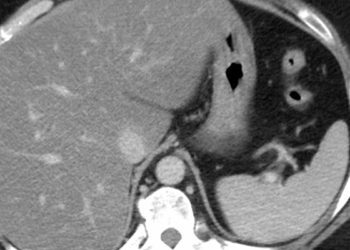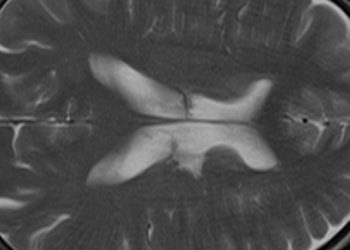OCT-guided PCI results in larger minimum stent area than angiography-guided PCI
1. In this randomized controlled trial, the minimum stent area following percutaneous coronary intervention (PCI) was significantly higher with optical coherence tomography (OCT)-guided PCI than angiography-guided PCI.
2. There were no significant differences in target-vessel failure between OCT-guided PCI and angiography-guided PCI at two years.
Evidence Rating Level: 1 (Excellent)
Study Rundown: PCI is currently the most commonly performed technique for PCI. However, it is associated with inherent limitations, such as the inability to identify underexpansion of implanted stents, malapposition to the vessel wall, and limited information about plaque morphology. OCT is a novel method of imaging that may allow for increased accuracy in plaque morphology identification, the size of vessel lumen determinations, and evaluating the outcomes of PCI post-operatively. This was a multi-center randomized trial comparing the efficacy of OCT-guided PCI against angiography-guided PCI in patients with medication-treated diabetes and high-risk features. Results of the analysis found that OCT-guided PCI resulted in a larger minimum stent area than angiography-guided PCI and that there were no significant differences in target-vessel failure two years after the primary intervention. Similarly, there were no significant differences in death attributable to cardiac causes between the two groups. A key limitation of this study was the lack of treatment concealment from investigators and cauterization staff. However, the outcome assessors were blinded to the treatment of choice. Further, the results were unable to account for systematic differences introduced by operator skill and experience. Overall, this study presented evidence that OCT-guided PCI results in a larger minimum stent area than angiography-guided PCI.
Click to read the study in NEJM
In-Depth [randomized controlled trial]: This was an international randomized controlled trial investigating the efficacy of OCT-guided versus angiography-guided PCI amongst patients with evidence of myocardial ischemia, being high-risk for developing myocardial ischemia, or having high-risk coronary-artery lesions. The primary outcomes of interest were the final minimum stent area following PCI, as well as target-vessel failure at two years. All adult participants with medication-treated diabetes were included. Those who were not deemed to have high-risk lesions were excluded. After applying the inclusion and exclusion criteria, 2,487 participants were randomized in a 1:1 ratio to receive OCT-guided PCI (n=1,233), or angiography-guided PCI (n=1,254). Results of the primary analysis found that the minimum stent area following PCI was significantly higher in the OCT group compared to the angiography group (mean difference, 0.36mm2; 95% Confidence Interval [CI], 0.21-0.51; p<0.001). There were no significant differences in target-vessel failure within two years between the OCT and angiography groups (p=0.45). However, the angiography group demonstrated a marginally elevated rate of stent thrombosis (1.4%) compared to the OCT group (0.5%). In summary, this study provided evidence that OCT-guided PCI results in a larger minimum stent area compared to angiography-guided PCI, without significant differences in target-vessel failure at two years.
Image: PD
©2023 2 Minute Medicine, Inc. All rights reserved. No works may be reproduced without expressed written consent from 2 Minute Medicine, Inc. Inquire about licensing here. No article should be construed as medical advice and is not intended as such by the authors or by 2 Minute Medicine, Inc.







